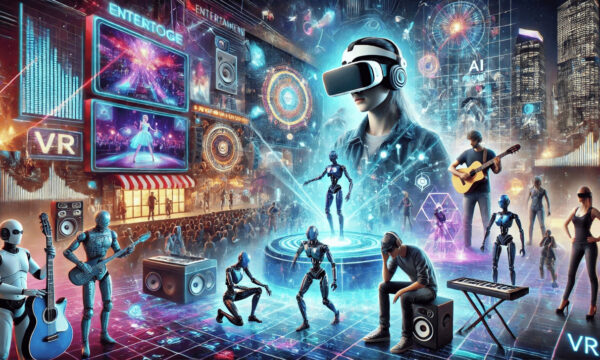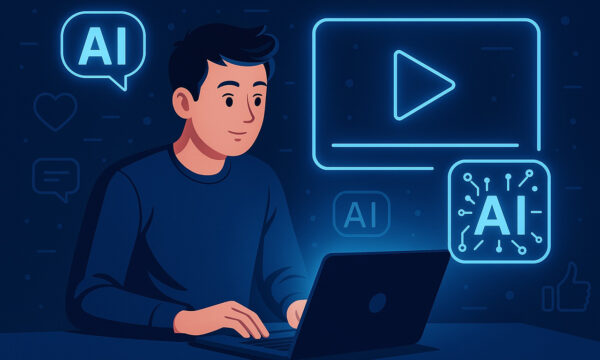AI and education: Shaping the future of learning

From healthcare to entertainment, artificial intelligence (AI) is now present in nearly every industry. It is revolutionising processes and creating new opportunities. AI is also evident in all parts of society, as seen on platforms such as AI Girlfriend. There, the technology provides emotional support for those who feel isolated. AI offers interactive companionship that helps individuals navigate loneliness and build a sense of connection in today’s fast-paced, often fragmented world.
Despite its appearance in nearly every industry and all corners of society, AI-based technology has impacted few realms as much as education. AI is reshaping classrooms, redefining learning experiences, and introducing new tools that cater to individual student needs.
AI also analyses data, provides real-time feedback, and tailors content. As a result, learning is more effective—and inclusive—than ever. That’s something every teacher, administrator, and parent wants for today’s education system.
From personalised study plans to intelligent tutoring systems, AI opens the door to innovations that seemed unimaginable a decade ago. This progress is timely: education currently faces several daunting challenges worldwide.
The good news? Whether dealing with accessibility gaps or limited teacher resources, AI promises solutions that make learning adaptive, interactive, and far-reaching.
Personalised learning with AI
Every student learns differently. AI-driven platforms now offer personalised learning paths to meet those variations. These systems analyse performance data and adjust materials to match individual needs. Adaptive tools such as DreamBox and Khan Academy create customised lessons that cater to each learner’s pace. This ensures that no student falls behind.
Key benefits of personalised learning with AI
AI offers a plethora of benefits by making learning a personalised experience:
- Tailored Instruction: AI identifies a student’s unique strengths and weaknesses through ongoing analysis of their performance and learning patterns. It then presents materials specifically designed to address individual needs. For example, certain platforms adapt math lessons in real time by offering simpler or more advanced problems based on a student’s responses.
- Real-Time Feedback: AI systems provide immediate guidance that allows students to correct mistakes and deepen their understanding of the subject matter. This continuous loop of feedback helps learners stay on track and reduces frustration. Grammarly not only highlights writing errors—it also explains them. This helps users refine their skills with each correction.
- Enhanced Engagement: AI keeps learners motivated by offering content that aligns with their interests and learning styles, making education more enjoyable and interactive. Platforms use gamification and AI to adjust language lessons dynamically. This rewards users with points and streaks to maintain their focus and interest in learning new languages.
Students no longer need to struggle through one-size-fits-all curricula. Instead, AI helps them receive support designed just for them.
AI in classroom support
From lesson planning to grading, teachers face an ever-growing list of responsibilities. AI now assists with these tasks. This allows educators to focus more on what they do best: teaching. For example, platforms such as Gradescope provide detailed and consistent assessments by streamlining grading processes.
AI also identifies learning challenges early. Tools such as Microsoft’s Reading Progress detect issues like dyslexia. As a result, teachers can intervene with students—before gaps widen. This enhances outcomes by helping educators provide targeted support.
How AI benefits teachers:
- Saves time by automating administrative tasks.
- Provides valuable insights on student performance and learning styles.
- Helps create individualised education plans for struggling students.
AI doesn’t replace teachers – it empowers them to teach more effectively.
Virtual classrooms and AI tutors
Virtual classrooms powered by AI have revolutionised remote learning. These platforms enable students to access education anywhere, anytime. Tools such as Zoom create interactive and efficient learning environments.
Squirrel AI and other AI-based tutors provide real-time assistance by answering questions and clarifying concepts. They adapt to a student’s pace and offer resources tailored to specific areas of struggle. This ensures a dynamic and engaging learning experience.
Advantages of virtual classrooms and AI tutors:
- Accessibility for students in remote locations.
- Immediate feedback and personalised guidance.
- Flexibility in learning schedules.
AI-powered virtual classrooms make education more inclusive and flexible by breaking down traditional barriers.
Global education access through AI
AI is capable of bridging the education gap that exists in underserved and remote areas. Online courses and tools deliver high-quality learning materials to communities that lack traditional resources. Platforms such as Duolingo use AI to teach languages, while machine translation ensures content is accessible in multiple languages.
Organisations such as UNESCO leverage AI to expand education opportunities. Adaptive learning technologies provide personalised support – even in settings where resources are limited. Thanks to AI’s ability to scale education, more people from marginalised populations are able to access knowledge.
AI addresses geographic and economic disparities. In doing so, the technology makes learning opportunities more equitable.
AI and emotional support: A virtual companion for students
AI’s role in education extends beyond academics. Platforms such as AI Girlfriend show how virtual companions can provide support to students who feel isolated. These systems offer empathy, comfort, and much-needed interaction. This helps users manage stress and loneliness.
While these virtual companions are not meant to be a replacement for human relationships, they do serve a purpose. They provide students with a safe space to share thoughts and feelings—particularly during challenging times.
This emotional support enhances mental well-being, which is crucial for academic success.
Emerging trends and the future of AI in education
AI’s influence on education continues to grow. Emerging trends point to even greater possibilities:
- Smarter Content Creation: AI curates dynamic learning resources tailored to evolving educational needs.
- Data-Driven Decisions: Educators and policymakers use AI insights to refine curricula and address systemic challenges.
- Inclusive Learning Environments: AI enables students with disabilities to access tools that meet their unique needs.
An AI-enhanced future holds promise—especially within the world of education. AI’s impact will be seen in three major ways: it will further personalise learning, it will inspire stronger teacher-student connections, and it will make education more inclusive and adaptive.
And as technology advances, AI will help reshape education. It will transform it into a system that adequately prepares students for the demands of a rapidly changing world. By blending innovation with inclusivity, AI offers easy-to-use solutions that benefit students, teachers, and entire communities worldwide.
The editorial unit

















Facebook
Twitter
Instagram
YouTube
RSS